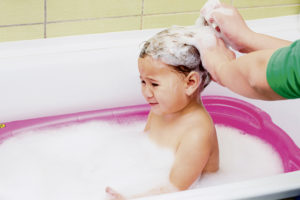When I wash my son’s hair in the bathtub, I’m scared the neighbors are going to call the cops because he’s screaming so loudly. My daughter only eats chicken nuggets, french fries and noodles, no matter how hard we try to offer her healthy foods. The school keeps calling and saying my son is pushing his friends, but he’s a sweetheart at home. Or, the opposite: my daughter’s teacher describes her as an “angel” at school, but when she walks through the door she immediately melts down, hits us and tells us she hates us.

What on earth is going on? Well odds are, poor sensory processing is the culprit. Sensory processing or sensory integration is how the brain registers everyday information through sights, sounds, touch, movement and other, more internal, sensations. Some kids reach a point of “enough” very quickly, meaning their brains have a low threshold for that input. This is the kid who gags even at the sight of a cucumber or cries and rubs his arm when someone gently brushes by him. This over-sensitivity can occur with any kind of sensation and the result can be a child who is pushed into crisis mode or “fight-flight-fright” with normal daily activities or experiences. Some kids, on the other hand, don’t seem to ever reach that threshold of registration in the brain. This is the child who might climb the bookshelf and crash down onto the couch without skipping a beat. It might be more subtle, like a 4th grader who chews his pencil down to a nub.
Sensory processing disorders are quite common- affecting about 5-15% of all kids. When a child has a developmental delay or a medical diagnosis, like ADHD or autism, the likelihood of a sensory processing disorder going hand-in-hand jumps to 90%.

So, what can you do? Left untreated, kids may end up with long term problems, like anxiety, obsessive-compulsive tendencies, gastrointestinal issues, etc. The good news is, sensory processing disorders are very treatable. An occupational therapist can help you set up a “sensory diet” where you build in positive sensory experiences into your child’s daily routines so that he or she can cope with unwelcome input or have a better understanding of what is “enough”. Specific therapies involving movement, muscle work and oral-sensory-motor or “eating” therapy are very effective. It is all about re-setting the brain thresholds and rewiring the nervous system so that sensory experiences feel “just right.” Sensory kid… Super kid!


